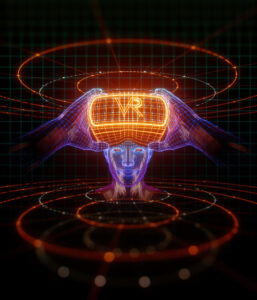Oil & Gas companies spend millions of dollars on training old and new employees to meet safety standards. Virtual Reality and 3D Immersive Media allow companies to reduce their training budget significantly while increasing safety for employee training. Not only is the budget improved, but companies can train employees on emergencies and dangerous situations within a safe environment – which would otherwise be impossible to prepare for.
Unlike other industries, oil and gas companies often work in remote locations – both on land and offshore. Immersive training technology makes it convenient to prepare crews with proper training while in the office without traveling to remote areas. Thus, it opens the door for crew certifications in VR simulators.
Simulation of real-world scenarios provides important parameters in oil & gas operations used to evaluate data and company performance. The use of digital twins comes in handy when dealing with dangerous systems that present themselves at an oilfield, refinery, or offshore drilling rig. Not only is training improved, but it also improves the efficiency of inspection and maintenance activities.
VR can create 3D tours of subsurface geological data and structures to replicate subsurface reservoirs and other geological formations. This type of VR usage with 3D digital models benefits geologists, engineers, and scientists to understand the topography better and improve drilling operations.
The most significant benefit the oil & gas industry has with VR is the harsh conditions that present themselves with drilling. Companies can connect sensors on equipment and suits to allow for incredible precision when replicating real-life scenarios. This increases the safety of these situations and helps to identify problems and develop plans to avoid them.
Let’s take a look at the variety of ways the oil & gas industry is using VR:
DNV developed a Maritime Simulator Training System that certifies “cloud-based distant learning simulators with virtual reality (VR) requirements.”
Neptune Energy has started a contract with PaleBlue to develop a novel oil platform familiarization through VR.
A leading explorer for the oil & gas industry, Equinor, uses AR and VR to assess its offshore assets by creating a digital twin called Echo. According to their website, “Echo is Equinor’s digital twin solution, a visualization tool used to access and visualize data.” This use of immersive media improves safety and efficiency for project development and operation.
Industrial3D also has several examples of immersive media designed for companies in the oil & gas industry:
Pioneer Land Rig Virtual Walk Through Tour
Leviton Tools Oil & Gas Tool Usage
As oil and gas companies find increasing opportunities for remote training, virtual training programs, immersive technology, and other mixed reality uses, the potential of immersive media and virtual reality continues to grow.
Be sure to subscribe to Industrial3D on YouTube for 3D simulations, 3D animations, virtual reality and more immersive media development.

Industrial3D Offers 3D Animation in Houston, TX for Virtual Reality and Interactive Media Projects
In today’s fast-moving digital world, companies are turning to immersive tools like virtual reality and interactive media to engage their teams and audiences better. These






